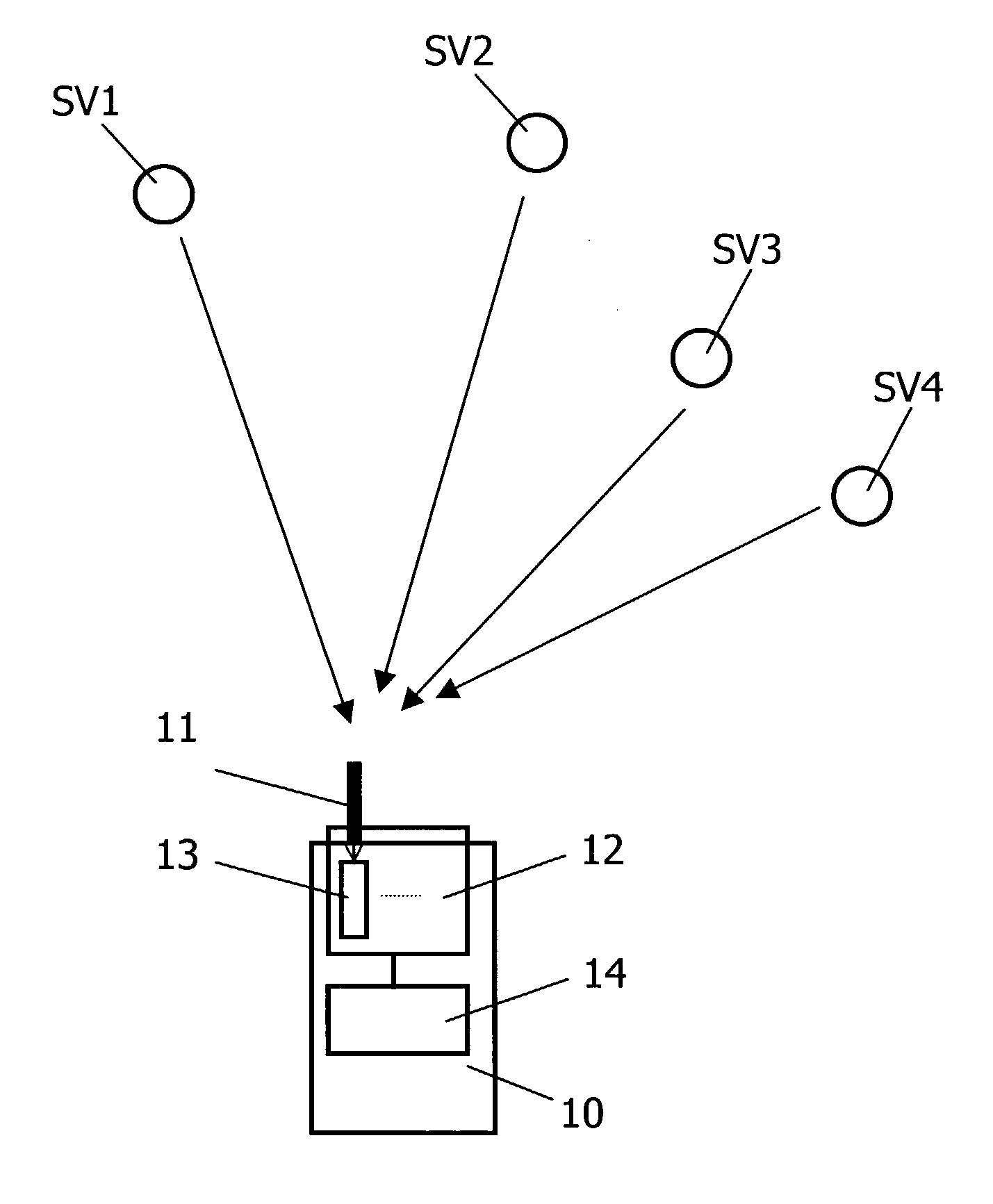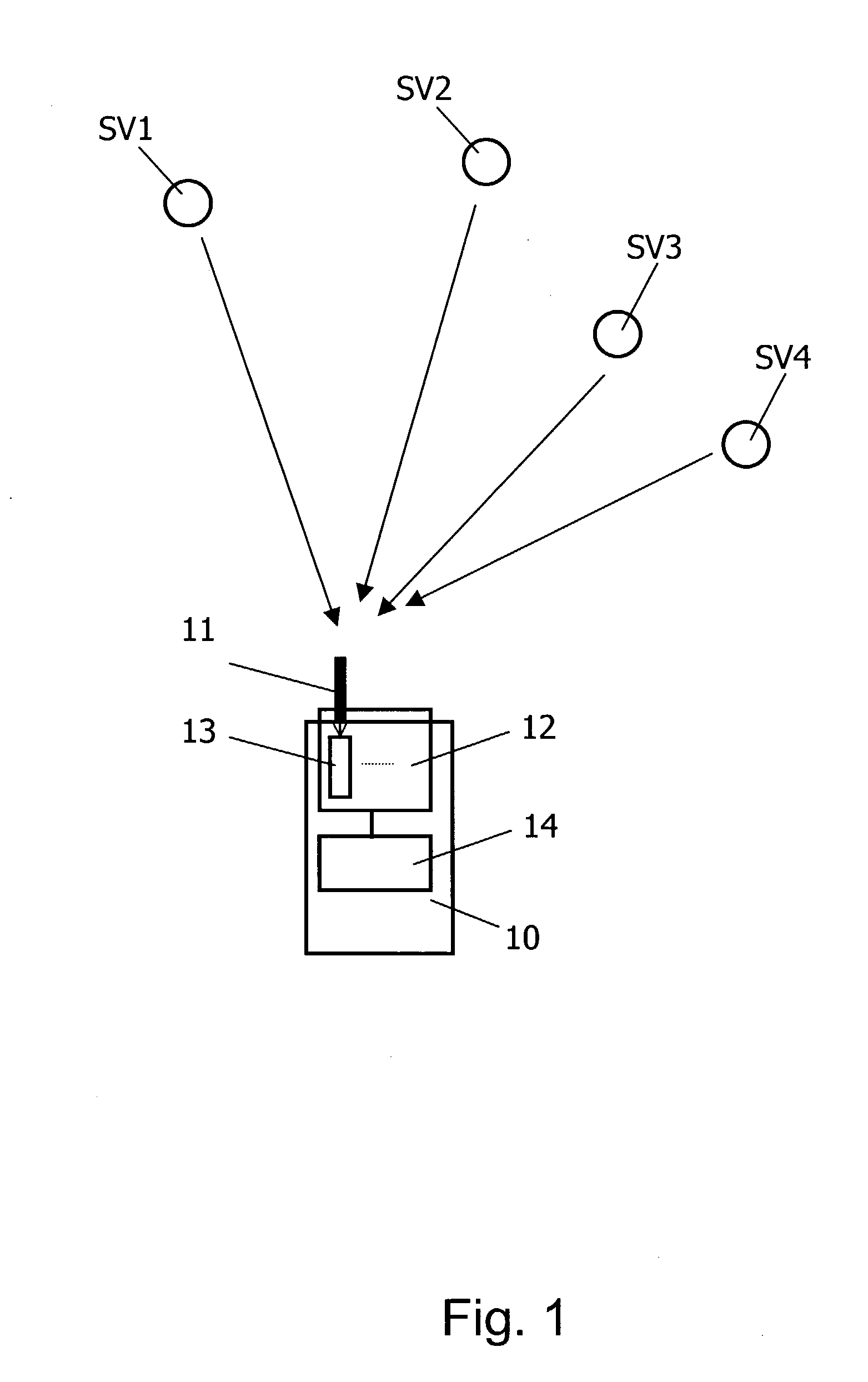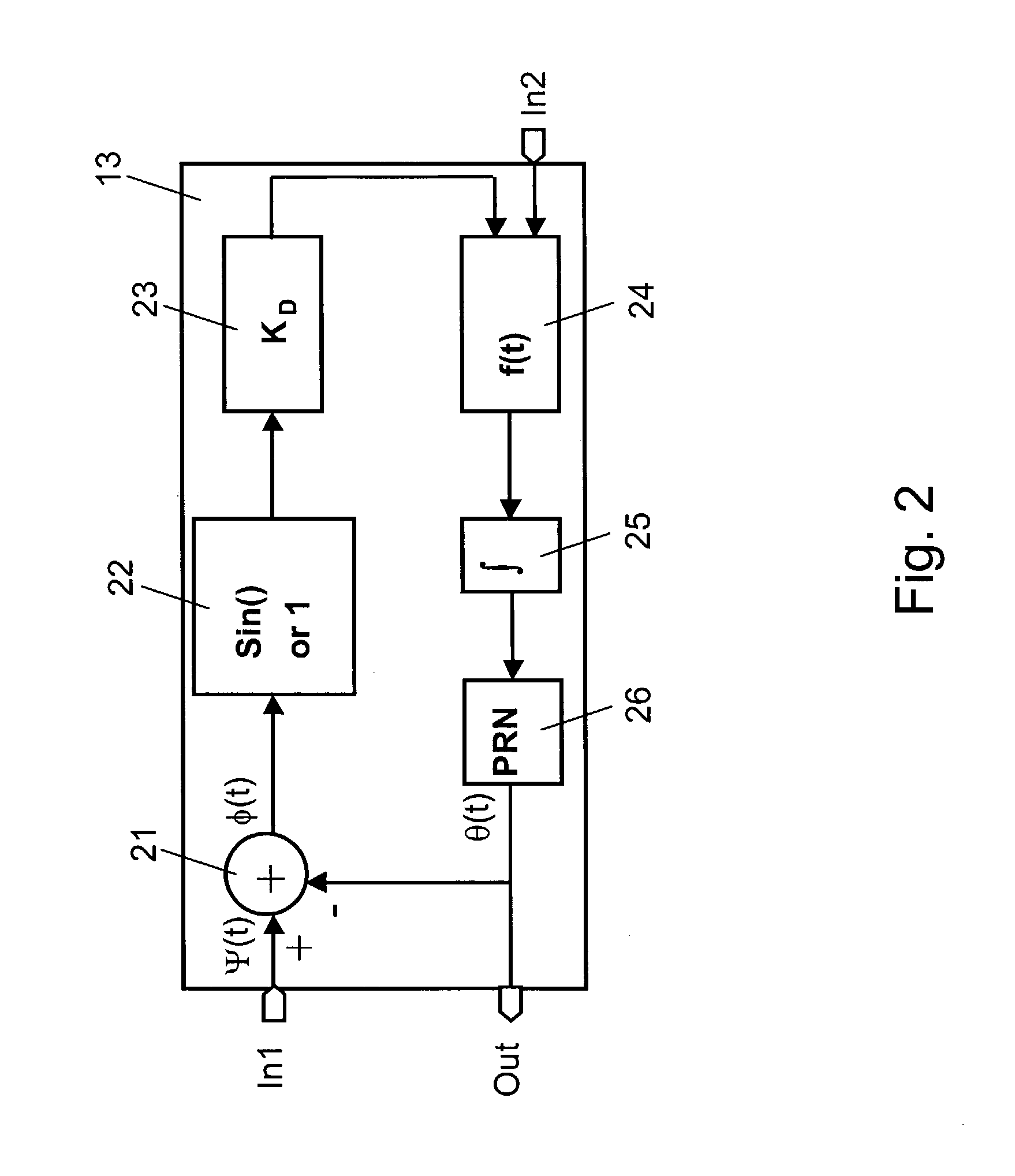Adjustment of a phase difference between two signals
a phase difference and signal technology, applied in the direction of synchronisation signal speed/phase control, instruments, transmission monitoring, etc., can solve the problem of limited control range in which the tracking loop is able to maintain or achieve synchronization, etc., to achieve increased controllability of the tracking loop, wide effective control range, and higher power consumption
- Summary
- Abstract
- Description
- Claims
- Application Information
AI Technical Summary
Benefits of technology
Problems solved by technology
Method used
Image
Examples
Embodiment Construction
[0033]FIG. 1 schematically presents a positioning system in which the invention is implemented.
[0034]The positioning system comprises a plurality of GPS satellites SV1, SV2, SV3, SV4 and a GPS receiver 10.
[0035]The GPS receiver 10 comprises an antenna 11, which is connected to a tracking module 12. The tracking module 12 comprises several tracking loops 13, of which only one is depicted in FIG. 1. Each tracking loop 13 forms part of a distinct processing channel for the received signals. Each tracking loop includes a PRN generator for generating a replica code sequence for signals from another GPS satellite. Usually, more than seven tracking loops are provided, i.e. replica code sequences for more than seven satellites can be generated. The output of the tracking module 12 is provided for further use to some other processing components 14.
[0036]When the GPS receiver 10 receives a signal from a satellite SV1, SV2, SV3, SV4, the GPS receiver 10 compares the code values of the received...
PUM
 Login to View More
Login to View More Abstract
Description
Claims
Application Information
 Login to View More
Login to View More - R&D
- Intellectual Property
- Life Sciences
- Materials
- Tech Scout
- Unparalleled Data Quality
- Higher Quality Content
- 60% Fewer Hallucinations
Browse by: Latest US Patents, China's latest patents, Technical Efficacy Thesaurus, Application Domain, Technology Topic, Popular Technical Reports.
© 2025 PatSnap. All rights reserved.Legal|Privacy policy|Modern Slavery Act Transparency Statement|Sitemap|About US| Contact US: help@patsnap.com



